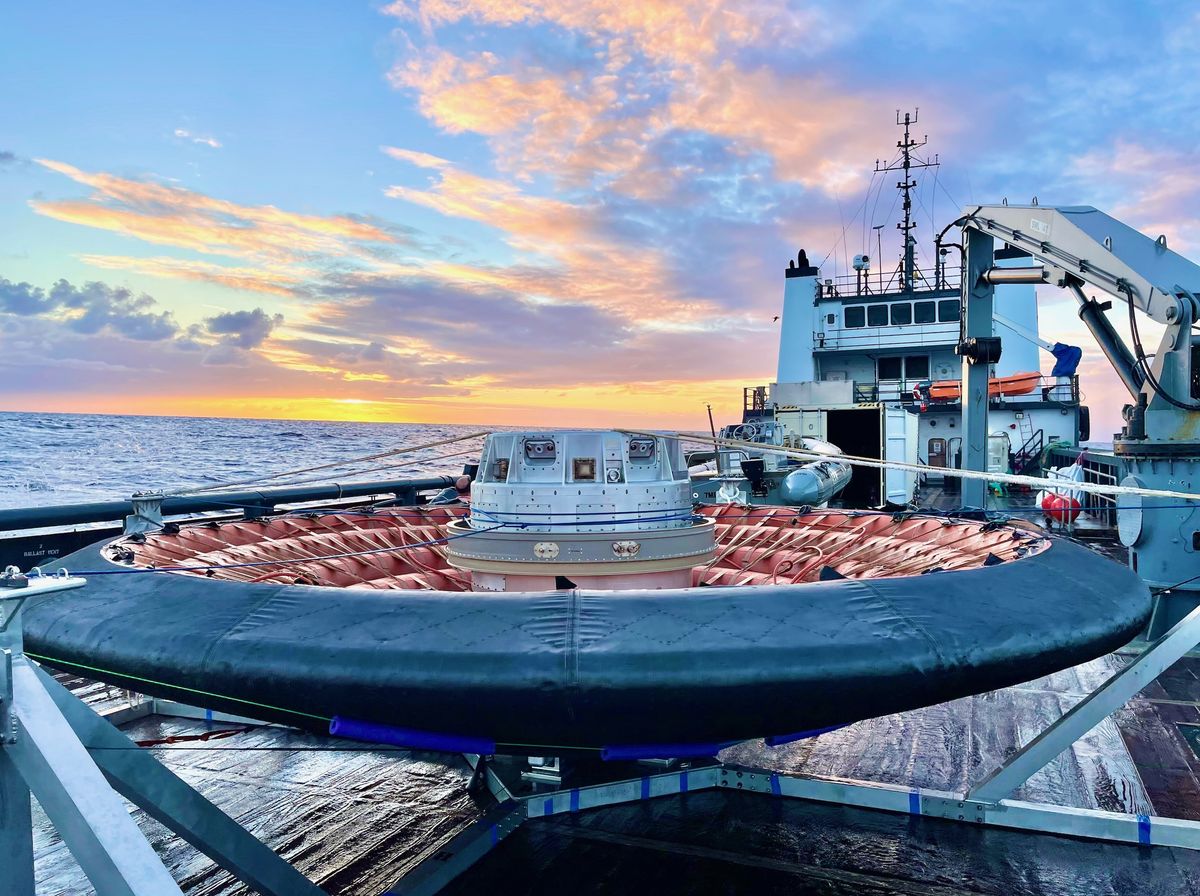
In the span of just six days, NASA took two big steps toward putting boots on Mars.
The agency's Artemis 1 mission launched on Wednesday morning (Nov. 16), sending an uncrewed Orion capsule toward the moon atop a huge Space Launch System (SLS) rocket.
NASA is counting on SLS and Orion to help the agency establish a lunar base by the end of the 2020s — a key priority of the Artemis program. And, if all goes according to plan, the two vehicles will also enable even more ambitious feats, helping astronauts get to Mars by the late 2030s or early 2040s.
Related: NASA's Artemis 1 moon mission: Live updates
More: 10 wild facts about the Artemis 1 moon mission
Last week, on Nov. 10, NASA tested hardware that could help these crewed Mars missions land safely — an inflatable heat shield called LOFTID, which launched to Earth orbit with the JPSS-2 weather satellite and then came barreling back to Earth. LOFTID survived its fiery return trip in great shape, suggesting that the tech has great potential to help land heavy hardware on Mars, team members said.
"The demonstration was a huge success," Joe Del Corso, LOFTID project manager at NASA's Langley Research Center in Virginia, said during a press conference on Thursday (Nov. 17).
"We have now the ability to both put heavy payloads into space and to bring them back down," he added. "These two successes are huge steps in enabling human access and exploration. We're going to space, and we want to be able to stay there."
LOFTID (short for "Low-Earth Orbit Flight Test of an Inflatable Decelerator") is an inflatable heat shield designed to slow a payload's descent through a planetary atmosphere via drag.
NASA deems this strategy a promising one for its crewed Mars plans, which will require landing big payloads such as habitat modules on the Red Planet. Such gear could tip the scales at 20 tons or so — far too heavy for current Mars entry, descent and landing systems to handle.
NASA's 1-ton Curiosity and Perseverance Mars rovers, for example, pretty much tapped out the rocket-powered sky crane method that got them down safely through the Red Planet's thin air, agency officials have said. (Parachutes were part of those rovers' touchdowns as well, as they would be with an inflatable heat shield landing system.)
Last week's launch provided an ambitious test of this tech. LOFTID launched in a compact configuration with JPSS-2 aboard a United Launch Alliance Atlas V rocket. After deploying from the Atlas V's Centaur upper stage, LOFTID expanded to its full diameter of about 20 feet (6 meters), positioned itself for Earth return and took the plunge.
Initial inspections, conducted after the heat shield was pulled out of the Pacific Ocean near Hawaii, suggested that LOFTID passed the test with flying colors. And a further week of analyses has only strengthened that conclusion.
"The vehicle looks just beautiful. It looks pristine, and I really can't say that enough," Del Corso said. "It was surprising to me how well, how good, the vehicle looked."
Scientists and engineers will continue analyzing data for another year or so to get a complete understanding of the test flight, LOFTID team members said.
The LOFTID project, which cost a total of $93 million over five years, isn't the final step in inflatable Mars heat shields, however.
A structure about three or four times wider than LOFTID would likely be required to get a big payload like a habitat module down safely on the Red Planet, project team members said. Scaling the tech up so dramatically poses a number of challenges, which scientists and engineers can now start assessing seriously after LOFTID's successful flight.
"There's quite a bit of work that needs to be done with that [scaling up]; there are facility considerations with that that need to be looked at," Trudy Kortes, director of technology demonstrations at NASA's Space Technology Mission Directorate, said during Thursday's briefing.
"But the roadmap will guide us on that and our future investments in that," she added. "We're taking a look at that now, and really the short-term future for that. So yeah, that would be the next step for this capability."
Mike Wall is the author of "Out There (opens in new tab)" (Grand Central Publishing, 2018; illustrated by Karl Tate), a book about the search for alien life. Follow him on Twitter @michaeldwall (opens in new tab). Follow us on Twitter @Spacedotcom (opens in new tab) or Facebook (opens in new tab).
https://news.google.com/__i/rss/rd/articles/CBMiT2h0dHBzOi8vd3d3LnNwYWNlLmNvbS9hcnRlbWlzLTEtbGF1bmNoLWxvZnRpZC1oZWF0LXNoaWVsZC1zdWNjZXNzLW1hcnMtbWlzc2lvbnPSAQA?oc=5
2022-11-18 11:00:58Z
1628866751
Tidak ada komentar:
Posting Komentar